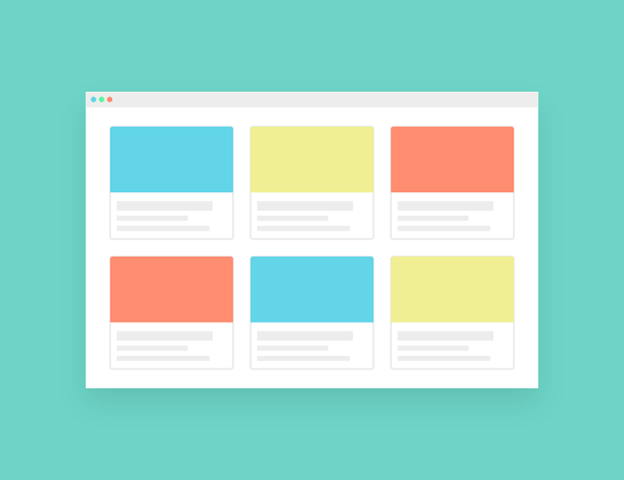Table of Contents
The growth and expansion of the product design industry have brought the significance of design writing to the spotlight. UX writing stems from the need to ensure smooth interaction with the user interfaces of an app or a website. In simple terms, UX writing is a form of writing that informs and instructs users on the next action to take in their user journey.
Think about how impossible it would be to enjoy the Instagram App without words like ‘story’ ‘follow’ ‘post’ ‘update bio’ and other descriptive sentences that help you understand how certain features work. If the IG app or website was all logo and colors, without words, it wouldn’t make any sense. It’ll be as useless as an empty billboard would it not? In that case, consider UX Content writing as a Compass that leads you to the other side of satisfaction. It is also much like a GPS that directs the driver (the user in this case), throughout the journey to an expected destination.
This barely makes sense, right?
It is noteworthy to mention that people make the mistake of thinking that UX writers write copies for promotional or marketing purposes. It’s important to note that UX writers do not bother themselves about attention-grabbing headlines that make readers engage with a lengthy copy... Neither do they create content marketing strategies for blogs. Similarly, UX writers do not practice salesmanship-in-print as most copywriters do. Instead, their goal is to make a product look attractive, and convey the company’s voice most simply and seamlessly.
What UX Writing Entails
As established in previous paragraphs, UX Writing is one form of writing that allows users to navigate a product easily. However, UX writing goes beyond writing introductions and instruction that aids easy user navigation. UX writing is effective when it speaks the same way its users speak. It is a simple, straight-to-the-heart form of writing that serves as an interaction between the target audience and the product.
Again, if the words for interacting on IG were Portuguese, as a Native English speaker how well do you think you can engage with the app? Not so well right? Consider how IG has made it easy for millions of users across diverse ethnic societies to engage with its product, with the ‘language translation feature?”. In this case, it speaks the language of its users. (Literally).
Additionally, the user's language, also suggests their modes of speaking, which covers the sentences, words, and even slang that they use often. In this case, we can say that a product that speaks the language of its intended users is a winning product. According to Mercurynews, you’ll notice that most of the websites offering professional services are seamless and easy to use. And they help users achieve their goal of writing professional letters. That being said, let’s move to the major principles that guide UX writing.
The Ultimate UX writing guide
Ultimately, we’ve been able to paint a vivid picture of what UX writing is all about. And it's clearer that UX Copy should be directed to communicate with the users in the language they understand. It is important to know that how the communication flow is designed goes a long way in making or marring the user’s experience.
It’s one thing to know what UX writing should achieve, and it’s another to be able to put the right words together. Here are a few proven examples that’ll guide you to design the perfect copy flow for a product.
Intonation Matters
The voice of the company represents how the brand conveys its message. It helps to define the brand’s personality. Tone on the other hand comes in when responding to the users in their user experience. For instance, if you try to use a different device (different from the one you use normally,), to log in to your social media account, or a digital account for that matter, you notice how you’re immediately alerted that ‘a different device logged in’ and you need to confirm if it’s you.
Another example is when you try to buy a product from a store and you probably entered the wrong card details, the tone immediately alerts you that something’s wrong.
Tones vary in different situations, some examples of these tones are; ‘funny, neutral, serious, casual, neutral enthusiastic, and matter-of-fact, among others. The tone, in this case, depends largely on the user's actions, and the reputation the brand is trying to uphold. With great UX writing skills, you can easily adapt the accurate voice and tone, for specific user actions.
Simplicity Pays
If you go for words that are too complex and incomprehensible, it’s as good as ‘useless’. Avoid trying to implement complex concepts into your design, just because it’s clever and catchy. Your design plan should be largely influenced by how useful it is to the users, and how easy it is for users to comprehend.
Making your writing too complex is like shooting yourself right in the leg, it won’t fly much. The mantra of every UX writer should be to always ‘keep the words plain, clear, easy, and of great value to the user’s experience.
Make the Call-To-action Obvious and Clear
The Call-to-action helps users’ move on to the next part of their user journey and action on a product. If done wrongly, it can screw the buying process of users, and ultimately puncture your sales output.
Be Consistent in Labeling
Inconsistent labeling of buttons kicks hard at the ability of users to comprehend the flow. For instance, if the purpose of a button is to enroll for a course, don’t name one button ‘enroll now’ and name the same ‘start now’ on another screen. In the same vein, a UX copy achieves its goal if the brand’s personality is maintained with the right voice and tone. Inconsistent words in the design are more like trolls that make users reluctant in engaging a product.
Conclusion
In this article, we’ve been able to clarify the frequent misconceptions that associate copywriting and blog writing with UX content writing. In addition to that are the guiding principles upon which most UX writing plans are built on. Your main aim as a UX design writer should be to the end of achieving a fantastic user experience. And to do that, the most relevant details like your choice of words, how it relates to the users, and how helpful it is to them, go a long way.






